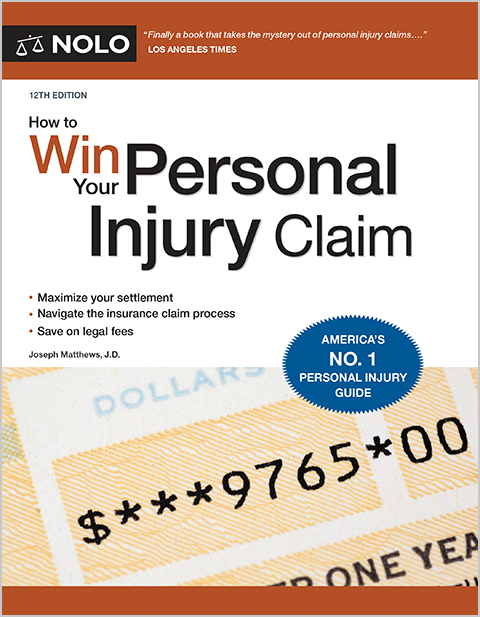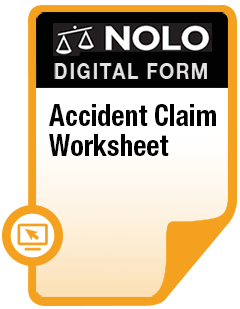Find out what kinds of insurance might pay for dog bites, common policy exclusions to look out for, the types of damages that might not be covered, and more.
The United States is home to between 84 million and 89 million dogs, according to the American Veterinary Medical Association. Nearly half of all American homes have at least one dog. With that many canine companions, it shouldn't be surprising that around 4.5 million people are bitten or injured by a dog every year. Most victims are children.
The Insurance Information Institute and State Farm report that in 2023, insurers paid more than $1.1 billion for dog-bite and other injury claims. The nationwide average claim cost was $58,545. Some states had a much higher average. In Illinois, for instance, the average cost was $73,797, the highest in the country.
Given the financial risks associated with dog ownership, liability insurance might be all that stands between you and financial ruin if your pet attacks and injures someone. We begin with a quick overview of state dog-bite liability laws. From there, we'll discuss the kinds of insurance that might be available, common exclusions for dangerous breeds or dogs with a history of biting, the kinds of damages that insurance might not pay, and more.
An Overview of State Dog-Bite Liability Laws
Legal responsibility ("liability") for dog bites can come from state statutes or from the common law, a body of legal rules derived from cases decided by the courts. In many states, liability rules come from both.
Statutory Liability
A majority of states have statutes that make a dog owner "strictly liable" for dog-bite or attack injuries. In a strict liability state, the owner is on the hook for injuries their dog causes even if the owner wasn't negligent (meaning careless) or otherwise blameworthy.
Common Law Liability
Most states also follow common law dog-bite rules, either alone or in addition to statutory liability. Typically, common law liability applies when a dog owner's negligence causes a dog to bite or attack. A dog owner is negligent when they don't act as carefully as they should under the circumstances.
In some states, a dog owner isn't negligent unless they know or should know that their dog is dangerous. This rule is often misleadingly referred to as the "one free bite" rule, but it doesn't guarantee dogs one "free" bite. Instead, once a dog has attacked, the owner is on notice of their dog's dangerous tendencies and can be found negligent should the animal injure anyone else.
A particular type of negligence liability, known as "negligence per se," can apply when a dog bite happens because the owner didn't follow state or local dog safety rules. Suppose a city leash ordinance requires that all dogs outside a home or fenced area must be kept on a leash. If an owner takes their dog for an off-leash walk and the dog injures someone, the owner can be found negligent per se for ignoring the leash law.
(Learn more about dog owner liability for bites and other injuries, and the kinds of damages that might be available to a dog bite victim.)
Insurance to Protect an Owner From Dog Bite Liability
Your dog bit and injured someone. Or you were bitten and injured by a dog. What kinds of insurance will protect the owner and pay the victim? Chances are it's one of these:
- homeowner's or renter's insurance
- an auto policy, or
- a pet liability policy.
Note that in several states, owners of dangerous or vicious dogs must get special insurance in order to keep their animal. Minnesota, for example, requires that the owner of a dangerous dog post a bond or obtain insurance with coverage of at least $300,000. (Minn. Stat. § 347.51 (2025).)
Homeowner's or Renter's Insurance
The most likely source of insurance for dog-bite injuries is a homeowner's or renter's policy. In 2021, more than a third of all homeowner's insurance payouts were for dog bite claims. Homeowner's and renter's policies usually include two kinds of insurance that might apply in the case of a dog bite: Liability coverage and medical payments coverage.
Liability coverage. Liability insurance pays a dog-bite victim's damages up to the policy limits, but some policies have dropdown (reduced) limits for dog bites. To collect liability insurance, the injured person (who can't be a member of the insured's household) must show that the dog owner is liable for the attack under state law, as discussed above. In addition to paying compensation to the dog-bite victim, liability insurance usually covers attorney's fees and case expenses paid to defend the claim.
Medical payments coverage. Also known as "medpay," this insurance pays a dog-bite victim's medical bills up to the per-person medpay limit—typically just a few thousand dollars. Medpay is no-fault insurance, meaning it pays regardless of the dog owner's liability for the attack under state law. Unfortunately, medpay usually only pays for medical bills. It won't cover lost wages, pain and suffering, or other losses.
Auto Insurance
When a dog bite happens in an insured auto, through a car window, or from the back of an open pickup truck, the owner's auto liability insurance might cover the victim's injuries. Read the policy language carefully for coverage exclusions. If the auto insurer balks at providing coverage, submit your claim to the owner's homeowner's or renter's insurance company, too. Let the insurers fight over who has to pay.
As with homeowner's or renter's insurance, a full-coverage auto policy probably includes both liability insurance and either medpay or—in no-fault auto insurance states—a similar kind of coverage called "personal injury protection" (PIP) insurance. You must prove the owner or driver liable under state law to collect liability insurance, but not to recover medpay or PIP. Unlike medpay, PIP might cover at least some lost wages (and in some states, other losses) in addition to paying for medical expenses.
Pet Liability Insurance
If you're a dog owner who can't get a homeowner's or renter's policy because insurers classify the breed as dangerous or the dog has a history of biting, a standalone pet liability insurance policy might be your only choice. This specialized insurance can provide protection when:
- no other insurance is available, or
- other insurance is available, but the coverage limits are too low.
Pet liability insurance probably won't come cheap. Premiums depend on the dog's breed, age, and history, and reportedly range from a few hundred dollars to more than $1,000 annually. Some insurers that are willing to cover high risk breeds will still refuse to insure dogs with a troublesome history.
Common Homeowner's and Renter's Policy Exclusions
Most insurers won't sell homeowner's or renter's policies covering "dangerous" or "vicious" breeds, or dogs with a history of bites or attacks. Some companies put special conditions on coverage, or offer significantly reduced policy limits for dog bite claims. Should you have a dog bite claim, expect your renewal premium—if the insurer is will willing to renew your policy—to skyrocket.
Breeds that insurers find objectionable typically include:
- Akitas
- Alaskan Malamutes
- Chows
- Dobermans
- German Shepherds
- Pitbulls
- Rottweilers
- Siberian Huskies, and
- any wolf breed.
A handful of states prohibit insurers from discriminating against specific breeds, or allow breed discrimination only for dogs that have known dangerous tendencies. A local attorney can tell you if you live in one of these states.
When you apply for homeowner's or renter's insurance, you'll be asked about dog ownership. Be sure to provide complete and truthful answers, because fraud or deception can result in claim denial or cancellation of your policy. Before you buy a dog in the middle of your policy term, contact your insurance agent to find out what impact it might have on your coverage.
Other Exclusions
Exclusions for dangerous breeds or dogs aren't the only potential problems dog owners might face. Keep an eye out for business pursuits and changed circumstances exclusions, too.
Business Pursuits Exclusions
Our discussion to this point has focused on residential property owners and renters. What if you run a business that involves dogs, like a dog-grooming or obedience-training company? The short answer is: You'll need to make special insurance arrangements.
Most homeowner's and renter's policies exclude from coverage losses related to "business pursuits" or "commercial activities." For example, a homeowner who regularly breeds and sells puppies for extra income might find that their insurance doesn't cover a claim from a potential buyer who was bitten while looking at a litter.
The kind of insurance you need will depend on the circumstances of your business. Speak to your agent about a special rider (add-on insurance) or a commercial liability policy.
Changed Circumstances
Your policy probably requires you to notify the insurance company of significant changes in your circumstances. If you don't, the insurer can cancel your policy or refuse to pay a claim. Significant changes could include the fact that you bought a dog (if you previously told the insurer you didn't have one), your dog has bitten or attacked someone, or it's been declared dangerous or vicious under a local dangerous-dog law.
Damages That Might Not Be Covered
Some states authorize courts to double or triple a victim's damage award, or to add punitive damages to an award, to punish a dog owner whose misconduct led to an attack or biting incident. But it isn't always clear whether these multiple or punitive damages must be paid by insurance.
Check your policy for specific types of damage exclusions. If your insurer says damages you're obliged to pay aren't covered, get advice from an experienced attorney right away.
Get Help With Your Dog-Bite Insurance Questions
If you've been injured by someone else's dog, a personal injury attorney can explain how the law applies to your situation and can help ensure that you get fair compensation for your medical expenses and other losses.
When your dog causes an injury or property damage, your insurance company should assign an attorney to the case. If you don't have insurance or the company denies the claim, you'll need to talk with your own lawyer—preferably one who's experienced in personal injury defense.


